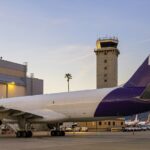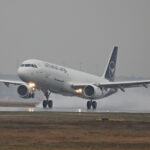TIACA: will Belt and Road be a game-changer for airfreight?
14 / 05 / 2018

In the lead up to this week’s Air Cargo China exhibition in Shanghai, the latest Friday Flyer from The International Air Cargo Association (TIACA) saw the industry body’s secretary general Vladimir Zubkov offer his thoughts on China’s Belt and Road Initiative (BRI) and its potential impact on the global airfreight business.
Formerly known as One Belt, One Road, this huge infrastructure project will take in at least 65 countries with a combined population of 4.4bn and about a third of the world’s economic output, Zubkov noted.
BRI aims to develop the overland and maritime infrastructure needed to create a broad web of new trade connections linking East to West.
It will do so by developing six broad economic corridors. Four will be predominantly land routes connecting China to Europe through Central Asia.
The rail element of the plan alone ranks as one of the biggest infrastructure projects ever undertaken, Zubkov pointed out.
So, he asked, with all these new high-speed capacities, what role will there continue to be for the air cargo sector? Is this the sort of a disruption which will deprive the industry of much of its market.
If we look at the examples of such industry-wide disruptions of the recent past, they typically take one of two forms. Zubkov explained. In some cases, the new model almost completely replaces the old. Examples include the pre-recorded audio tape, typewriter and film photography industries.
But most disruptions are partial, he said – the new and old business models come to coexist, dividing the market between them.
So, with BRI, will aviation and other modes of transport benefit alike? Only the future will offer an answer, Zubkov said, continuing: “But let me be daring enough to predict that the expected benefits of BRI, which is promising to work as an economic engine for most global economies, will elevate many of them to new heights and will stimulate global trade in even a more dynamic way.
“The overall profit pools should be large enough to sustain all modes of transport.
“The important issue for the air cargo supply chain is not only to retain its traditional values and attractiveness to customers, but to modernise keeping pace with and even exceeding the achievements of other modes of transport.
“We all know what our current share is in global trade – by volume and by value 1% and 35% respectively. It’s a good reference point. We are to be strong and forward looking, as a minimum, not to reduce our positions,” he said.
Perhaps the picture will become clearer at Air Cargo China.













